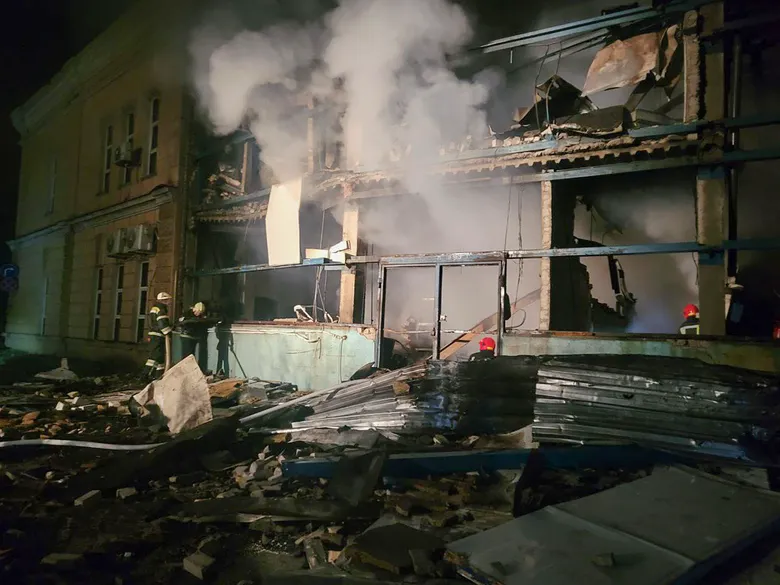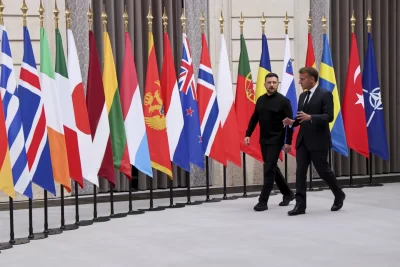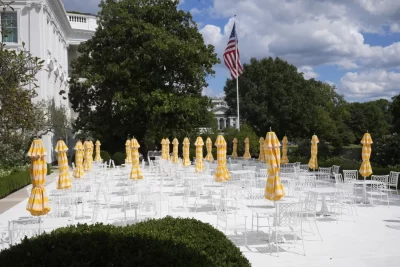
Ukraine on Monday launched a criminal investigation into military officers who organized a troop-honoring ceremony that was hit by a Russian missile strike, killing 19 soldiers in one of the deadliest single attacks reported by Ukrainian forces.
The State Bureau of Investigation said it aims to hold military officials accountable for the Rocket Forces and Artillery Day event held Friday near the front line in Zaporizhzhia, where Russian reconnaissance drones could easily spot the crowded gathering.
The carnage sparked a wave of criticism among Ukrainians who questioned on social media the planning of an event so close to the battlefield. President Volodymyr Zelenskyy lamented the deaths of the men of the 128th Separate Mountain-Assault Brigade of Zakarpattia as a “tragedy that could’ve been avoided.”
The investigation announcement came as officials said Russian drone and missile strikes in the city of Odesa wounded eight people and damaged an art museum that is part of a UNESCO World Heritage site, and satellite photos showed damage done by a Ukrainian missile strike to a Russian naval ship.
Odesa’s National Art Museum said seven exhibitions, most featuring the work of contemporary Ukrainian artists, were damaged by a strike that left a large crater outside the museum, which was celebrating its 124th anniversary.
The attack followed reports by the Russian Defense Ministry that Ukrainian cruise missiles aimed at the Zaliv shipyard in Kerch, a city in the east of the Moscow-held Crimean Peninsula, had struck one of its vessels.
Satellite photos analyzed by The Associated Press showed damage to a Russian navy corvette moored off Kerch.
The satellite pictures Sunday from Planet Labs PBC show what appeared to be a firefighting vessel, as well as booms in the water to stop oil leaks from the damaged ship. What appeared to be burn marks can be seen on the vessel, which was still afloat. Those marks were not visible on other satellite images captured of the vessel at port.
The measurements of the vessel and its shape correspond with a Karakurt-class corvette. In Russian, “karakurt” means “Black Widow spider.”
The ships are designed to carry Kalibr cruise missiles, the same kind of missiles that Moscow has used repeatedly against Ukrainian targets since launching the all-out war on the neighboring country in February 2022.
The Russian Defense Ministry said late Saturday that Ukrainian forces fired 15 cruise missiles at the Zaliv shipyard in Kerch, with at least two striking a ship and the shipyard.
Lt. Gen. Mykola Oleshchuk, the commander of Ukraine’s air force, later wrote in an online message that he believed the strike targeted a vessel carrying Kalibrs. He also suggested Kyiv used long-range French Scalp cruise missiles in the attack.
Andriy Ryzhenko, a captain in the Ukrainian naval reserve, had told Ukrainian media he believed the vessel struck by the missile was the Askold. That Karakurt-class corvette was being built at the port when Russian President Vladimir Putin visited Kerch and the shipyard in July 2020.
The Crimean Peninsula, which Russia illegally annexed from Ukraine in 2014, has been a frequent target since Putin ordered a full-scale invasion of Ukraine. Crimea has served as the key hub supporting the invasion.
Between Sunday and Monday, a 77-year-old man was killed and at least 16 people were injured by Russian shelling and airstrikes in southeastern Ukraine, the country’s presidential office said.
The attacks on Odesa also damaged grain warehouses and homes. The bomb blast in front of the fine arts museum caused damage to the building and collections but there was no immediate assessment of the scale of destruction, a spokesperson for the U.N. cultural agency said.
UNESCO “strongly” condemned the attack on the museum, saying on X, formerly Twitter, that: “Cultural sites must be protected in accordance with international law.”
It was the second time the museum has been damaged during the ongoing war. In July 2022, a blast destroyed the historic glass roof and windows of the museum.
___
Associated Press writer Jon Gambrell in Dubai, United Arab Emirates, Yuras Karmanau in Tallinn, Estonia, and Brian Melley in London contributed to this report.







